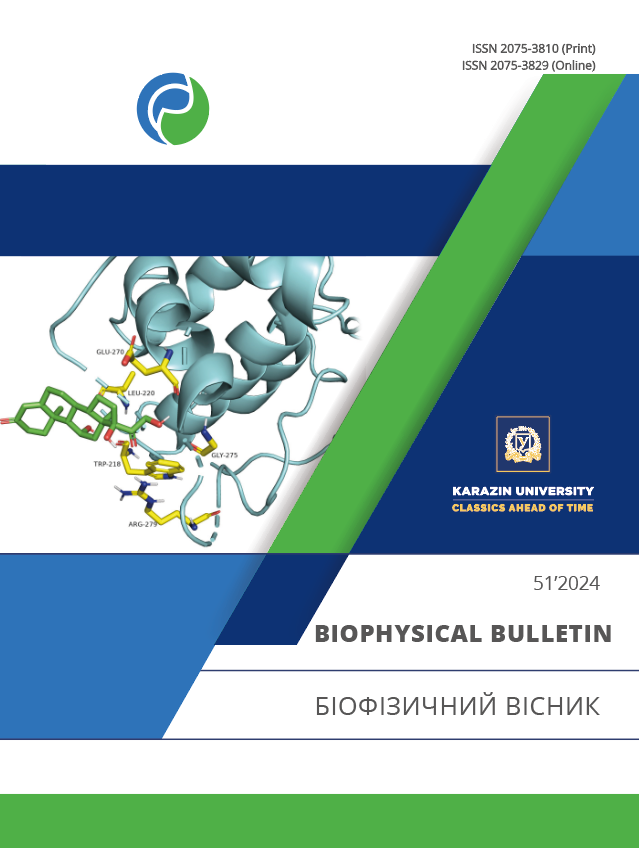Алгоритм тривимірної реконструкції для лінійної геометрії сканування
Анотація
Актуальність. Комп'ютерна томографія (КТ) визнана одним із найпотужніших методів діагностики та контролю над процесом лікування широкого ряду захворювань. Вона забезпечує можливість отримати детальну інформацію про внутрішню структуру органів та кісток. При цьому, не дивлячись на успіх в застосуванні комп'ютерної томографії у таких сферах дослідження як тривимірна рентгенівська мамографія або рентгенографія легень, не вдається досягти такого поширення як, наприклад, у випадку використання магнітно-резонансної томографії, навіть попри більшу точність КТ. Це пов’язано, в першу чергу, з обмеженнями, з точки зору безпеки, на допустиму кількість досліджень через шкідливість рентгенівського опромінення для пацієнта. Однією з головних проблем, які досі стоять перед дослідниками, є необхідність зменшення часу повного дослідження та зменшення радіаційного навантаження на пацієнта. Подолання цих задач має вирішальне значення для підвищення загальної ефективності медичних послуг, оптимізації планів лікування та, зрештою, покращення результатів лікування пацієнтів. Таким чином, вирішення цих проблем за допомогою інноваційних алгоритмів і методів комп’ютерної томографії має значні перспективи для революції в медичній діагностиці та забезпечення постійного прогресу сучасної охорони здоров’я.
Мета роботи. Метою даної роботи стала розробка алгоритму тривимірної реконструкції, який не залежить від конусності пучка випромінювання, а тому дозволяє проводити точну реконструкцію всього об’єкта, за єдине обертання джерела випромінювання навколо об’єкта дослідження.
Матеріали і методи. У роботі використовуються методи інтегральних перетворень та комп’ютерне моделювання для розв’язання обернених задач, що виникають у комп’ютерній томографії.
Результати. Отримано аналітичну формулу обернення для тривимірної комп’ютерної томографії з лінійною геометрією сканування з сегментацією, також було перевірено можливість практичного застосування розробленого алгоритму та розроблено методику дослідження з використанням лінійного руху конусного випромінювача та детекторів.
Висновки. Розроблений алгоритм дозволяє покращити реконструкцію шарів об’єкта, що значно віддалені від площини, в якій рухаються випромінювач та детектор, у порівнянні з існуючими алгоритмами.
Завантаження
Посилання
Radon J. On the determination of functions from their integral values along certain manifolds. IEEE Transactions on Medical Imaging. 1986;5(4):170–6. https://doi.org/10.1109/TMI.1986.4307775
Proksa R, Kohler T, Grass M, Timmer J. The n-PI-method for helical cone-beam CT. IEEE Transactions on Medical Imaging. 2000;19(9):848–63. https://doi.org/10.1109/42.887834
Tuy HK. An inversion formula for cone-beam reconstruction. SIAM Journal on Applied Mathematics. 1983;43(3):546–52. https://doi.org/10.1137/0143035
Clack R, Defrise M. Cone-beam reconstruction by use of Radon transform intermediate functions. Journal of the Optical Society of America A. 1994;11(2):580–5. https://doi.org/10.1364/JOSAA.11.000580
Smith BD. Image reconstruction from cone-beam projections: Necessary and sufficient conditions and reconstruction methods. IEEE Transactions on Medical Imaging. 1985;4(1):14–25. https://doi.org/10.1109/tmi.1985.4307689
Kudo H, Noo F, Defrise M. Quasi-exact filtered backprojection algorithm for long-object problem in helical cone-beam tomography. IEEE Transactions on Medical Imaging. 2000;19(9):902–21. https://doi.org/10.1109/42.887838
Jacobson C. Fourier methods in 3D-reconstruction from cone-beam data. Linköping: Department of Electrical Engineering, Linköping University; 1996. 256 p.
Grangeat P. Analysis of a 3D imaging device by reconstruction from cone beam X ray radiographs [dissertation]. Ecole Nationale Superieure des Telecommunications. 1987. 458 p.
Feldkamp LA, Davis LC, Kress JW. Practical cone-beam algorithm. Journal of the Optical Society of America A. 1984;1(6):612–9. https://doi.org/10.1364/josaa.1.000612
Fu Z, Tseng HW, Vedantham S. An attenuation field network for dedicated cone beam breast CT with short scan and offset detector geometry. Scientific Reports. 2024;14:319. https://doi.org/10.1038/s41598-023-51077-1
Wu Weiwen, Quan Chao, Liu Fenglin. Filtered back-projection image reconstruction algorithm for opposite parallel linear CT scanning. Acta Optica Sinica. 2016;36(9):0911009. https://doi.org/10.3788/aos201636.0911009
Smith BD. Cone-beam tomography: Recent advances and a tutorial review. Optical Engineering. 1990;29(5):524–34. https://doi.org/10.1117/12.55621
Kowalski G. Fast 3-D scanning systems using a limited tilting angle. Applied Optics. 1977;16(6):1686–90. https://doi.org/10.1364/ao.16.001686
Zeng GL, Clack R, Gullberg GT. Implementation of Tuy’s cone-beam inversion formula. Physics in Medicine and Biology. 1994;39(3):493–507. https://doi.org/10.1088/0031-9155/39/3/014
Hatamikia S, Biguri A, Herl G, Kronreif G, Reynolds T, Kettenbach J, et al. Source-detector trajectory optimization in cone-beam computed tomography: A comprehensive review on today’s state-of-the-art. Physics in Medicine and Biology. 2022;67(16):16TR03. https://doi.org/10.1088/1361-6560/ac8590
Reynolds T, Ma YQ, Kanawati AJ, Constantinidis A, Williams Z, Gang G, et al. Extended intraoperative longitudinal 3-dimensional cone beam computed tomography imaging with a continuous multi-turn reverse helical scan. Investigative Radiology. 2022;57(11):764–72. https://doi.org/10.1097/rli.0000000000000885
Hatamikia S, Biguri A, Kronreif G, Kettenbach J, Russ T, Furtado H, et al. Optimization for customized trajectories in cone beam computed tomography. Medical Physics. 2020;47(10):4786–99. https://doi.org/10.1002/mp.14403
Zeng GL. Revisit of the ramp filter. IEEE Transactions on Nuclear Science. 2015;62(1):131–6. https://doi.org/10.1109/tns.2014.2363776
Автори, які публікуються у цьому журналі, погоджуються з наступними умовами:
- Автори залишають за собою право на авторство своєї роботи та передають журналу право першої публікації цієї роботи на умовах ліцензії Creative Commons Attribution License, котра дозволяє іншим особам вільно розповсюджувати опубліковану роботу з обов'язковим посиланням на авторів оригінальної роботи та першу публікацію роботи у цьому журналі.
- Автори мають право укладати самостійні додаткові угоди щодо неексклюзивного розповсюдження роботи у тому вигляді, в якому вона була опублікована цим журналом (наприклад, розміщувати роботу в електронному сховищі установи або публікувати у складі монографії), за умови збереження посилання на першу публікацію роботи у цьому журналі.
- Політика журналу дозволяє і заохочує розміщення авторами в мережі Інтернет (наприклад, у сховищах установ або на особистих веб-сайтах) рукопису роботи, як до подання цього рукопису до редакції, так і під час його редакційного опрацювання, оскільки це сприяє виникненню продуктивної наукової дискусії та позитивно позначається на оперативності та динаміці цитування опублікованої роботи (див. The Effect of Open Access).





